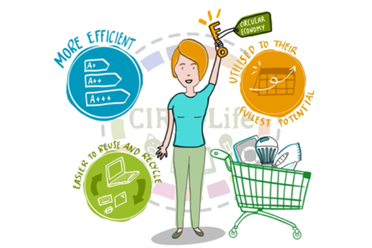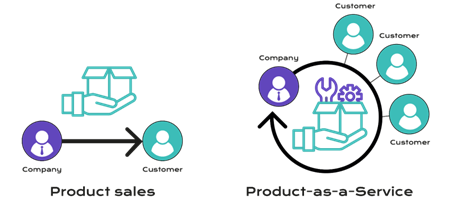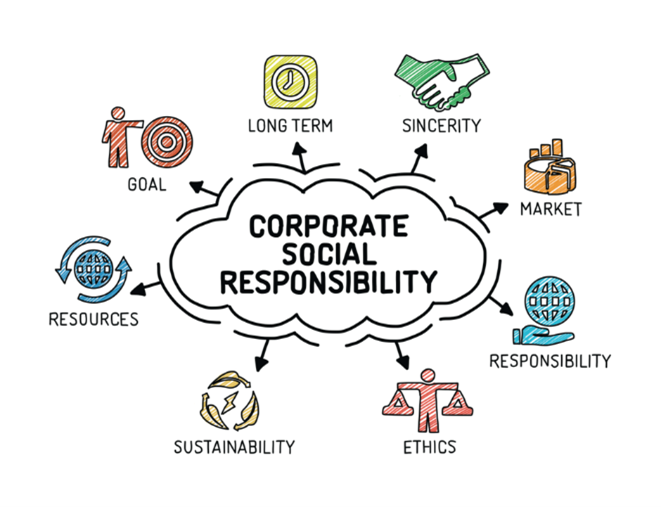Business approaches to influence environmentally conscious consumption

Business approaches to influence environmentally conscious consumption
by vivienne 11:23am Jan 03, 2025

Businesses play a critical role in shaping environmentally conscious consumption through various strategies that encourage consumers to make more sustainable choices. These approaches range from product design and marketing to providing transparency and incentives.
Here are some key business strategies to influence environmentally conscious consumption:
1. Sustainable Product Design and Innovation
Eco-friendly Product Development: Companies can design products with minimal environmental impact by using sustainable materials, reducing waste in production, and ensuring that the products are easy to recycle or compost at the end of their life.
Durability and Longevity: Focusing on product longevity encourages consumers to buy less frequently. This can include offering warranties, repair services, or creating high-quality, durable goods that last longer than conventional alternatives.
Modular and Repairable Designs: Products designed for repair or upgrades, rather than obsolescence, can influence consumers to choose items that can be maintained over time, reducing the need for replacement and lowering consumption rates.

2. Transparency and Eco-labeling
Clear Environmental Labeling: Use clear and credible eco-labels to indicate that a product is environmentally friendly. Examples include Energy Star, Fair Trade, or the Forest Stewardship Council (FSC). These labels help consumers easily identify sustainable products and make informed purchasing decisions.
Carbon Footprint Information: Some businesses are providing consumers with carbon footprint information for their products, helping them understand the environmental impact of their purchases and make lower-carbon choices.
Sustainability Reports: Many companies release annual sustainability reports that transparently communicate their environmental impact, sustainability goals, and progress. This helps build trust with eco-conscious consumers.
3. Educational Campaigns and Consumer Engagement
Environmental Awareness Campaigns: Businesses can raise awareness about sustainability through marketing campaigns, social media, and partnerships with environmental organizations. Educational content about reducing waste, energy consumption, or water usage can help consumers make more eco-friendly choices.
Storytelling and Purpose-Driven Marketing: Consumers are often drawn to brands that have a clear environmental mission. Brands can share the story behind their sustainable practices, the environmental challenges they are addressing, and the positive impact their products or services have on the planet.
Consumer Education on Circularity: Educating consumers about the benefits of a circular economy (e.g., reusing, recycling, and repurposing products) can help them make more sustainable purchasing decisions. Brands can share tips on how to care for products to extend their lifespan or provide information on where to recycle or resell used items.

4. Incentivizing Sustainable Choices
Discounts for Sustainable Actions: Offer incentives for consumers to engage in environmentally friendly behaviors, such as discounts for recycling, using reusable containers, or returning used products for reuse or refurbishment.
Rewards Programs: Implement loyalty programs that reward customers for making eco-friendly choices, like using reusable bags, opting for minimal packaging, or buying low-carbon products.
Carbon Offset Programs: Companies can offer customers the option to offset the carbon emissions generated by their purchase, often at the point of sale. This could include options to add a small amount to a purchase price that goes toward funding renewable energy projects or forest conservation efforts.
5. Sustainable Packaging and Waste Reduction
Minimalist and Eco-Friendly Packaging: Reduce the use of single-use plastics and excess packaging. Opt for biodegradable, recyclable, or reusable packaging materials. Offering products in bulk or using refillable containers can also help reduce packaging waste.
Packaging Take-Back Programs: Some businesses, particularly in the beauty or food industries, offer programs where customers can return packaging to be reused or recycled, helping to reduce the volume of packaging waste generated.
Refill Stations: Encourage consumers to reduce packaging waste by offering refill stations for common products like cleaning supplies, personal care products, or beverages. This helps create a closed-loop system where consumers can reuse containers.

6. Product-as-a-Service (PaaS) Models
Leasing or Renting Products: Companies can move beyond the traditional ownership model by offering products as a service. This model allows consumers to lease or rent items (e.g., clothing, electronics, tools, or cars) instead of purchasing them, which reduces overall consumption and waste.
Subscription Services forSustainable Products: Offer subscription models for products that are designed to be used sustainably, such as eco-friendly cleaning supplies, organic food delivery, or sustainable fashion rentals. These models promote conscious consumption and reduce overbuying.

7. Encouraging Secondhand and Upcycled Goods
Pre-owned and Refurbished Products: Encourage consumers to purchase secondhand, refurbished, or upcycled products. Many companies are creating marketplaces for pre-owned items, such as furniture, electronics, and clothing, to reduce the demand for new production and reduce waste.
Buy-Back and Trade-In Programs: Offer trade-in or buy-back programs for used products, allowing consumers to return items for recycling, reselling, or refurbishing. This extends product life cycles and promotes a circular economy.
Partnerships with Thrift Stores: Collaborate with secondhand and charity shops to promote sustainable consumption, encouraging customers to buy pre-loved products.
8. Carbon and Environmental Footprint Offsetting
Carbon Neutrality Initiatives: Encourage consumers to offset the environmental impact of their purchases, such as through partnerships with carbon offset projects. This could include tree planting or renewable energy projects that reduce overall carbon emissions.
Sustainability Commitments: Companies can commit to becoming carbon-neutral or achieving net-zero emissions, which appeals to consumers who are looking for brands that align with their values.
9. Corporate Social Responsibility (CSR) and Community Involvement
Corporate Giving and Volunteer Programs: Brands can engage consumers by involving them in environmental or social causes through volunteer programs, donations, or other community-based initiatives. This fosters a sense of shared purpose and encourages consumers to support businesses that are actively working toward positive environmental outcomes.
Transparency in CSR Initiatives: Demonstrating how profits are being used for environmental sustainability (such as funding green initiatives or charitable contributions to environmental organizations) can increase consumer trust and loyalty.

10. Collaborations with Environmental Organizations
Partnerships with NGOs: Collaborating with environmental nonprofits or advocacy groups can lend credibility to a company’s sustainability claims. It also gives businesses a platform to educate their customers about environmental issues and encourage responsible consumption.
Co-Branded Eco-Campaigns: Launch joint campaigns with environmental organizations to drive awareness of sustainable consumption practices, such as reducing plastic waste, conserving water, or using sustainable materials.
Conclusion
By integrating these approaches, businesses can not only influence environmentally conscious consumption but also position themselves as leaders in sustainability. Creating products, services, and experiences that align with consumer values while providing education, incentives, and transparency will encourage more eco-friendly decisions and foster long-term loyalty among environmentally aware customers. As sustainability continues to become a major factor in consumer choice, these strategies will help businesses thrive in a market that increasingly prioritizes the planet.






